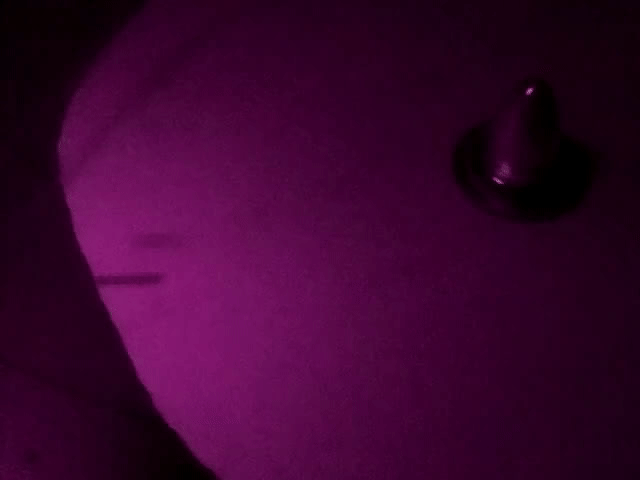slipstick:
The pitch/twist of the propeller adds to the power it takes and so the amount it slows the motor down. Or if you are using a prop make sure you get the lowest pitch (second number in the spec) you can find.
Thank you Steve for that hint.
I saw that reducing blade count from 3 to 2 made a difference.
Now following your "lowest pitch" guidance I ended up with the minimum possible, "1 blade with 0 pitch"!
I did cut out a thin circular disk (123mm diameter) from blue cardboard. I did press 4 layers of that cardboard together and measured 1mm thickness. And I added the reflective marker for laser tachometer measurements. Luckily the blue was dark enough to allow for successful speed determination:
As you can see in the photo I did place Raspberry v2 NoIR camera again to capture a 150fps video of fast rotating circular disk. Scene is again lit by 48led 12V light from top, and like before I captured with only 50µs shutter time to get clear frames. They suffer from rolling shutter effect, though. Here you can see circular disk slowly rotating, animation played at 5fps, 30× slower than real. Look at top right outrunner motor bullet, it absolutely keeps in place. The nearly quadratic reflective marker turned out to be not reflective for IR light:

Here you can see a run powered with 12V/6A, slightly more than 17000rpm or nearly 300 rotations per second, with 123mm diameter more than 100m/s speed! Because of the high speed and v2 camera rolling shutter effect the reflective marker now looks like a thin line. And the outrunner motor bullet heavily shakes. Again animation plays at 5fps, 30× slower than real:

Finally I did measure between 1A and 10A again for circular disk. I did leave out 8A and 9A because I am really happy with 10A rpm reading, and because of the stress those runs are for Simonk ESC that gets hot:
Current[A] 3-blade 2-blade disk
12.5 15321
10 14438 18320 21591
9 13871 17611
8 13384 17240
7 12740 16470 18736
6 11518 15649 17451
5 10883 14640 16105
4 9842 13379 14604
3 8652 11801 12993
2 7635 9773 10992
1 4791 7011 7480
Here is the updated diagram -- I will not even look at propellers anymore for my high rotational speed experiments, 0-pitch circular disk is the way to go for highest speeds:

New speed record achieved again with 21591rpm for 12V/10A, 139m/s(!) or 501km/h(!!):
$ echo "pi=4*a(1); scale=2; 0.123*pi*21591/60" | bc -ql
139.05
$ echo "pi=4*a(1); scale=2; 0.123*pi*21591/60*3.6" | bc -ql
500.58
$
I was first surprised that the thin cardboard could stand the massive forces, the disk rotates with 360 rotations per second.
I was surprised as well that the imbalance shown in the fast rotating animation did not do harm to the disk and just works. As you can see in the animation the line and dot that can be seen on motor test station ground plate in lower left remain completely in place. Only the 6cm high wooden bar superglued onto ground plate, the outrunner motor is firmly screwed into, shakes.
With new 240W transformer and new 50A digital amperemeter on weekend more amps tests can be done to see where the speed limit might be. And I already did draw a 160mm diameter circle on the remaining piece of blue cardboard I have, need to cut that out and see what rpms and tip speeds can be achieved with 10A for that disk ...
P.S:
The 123mm diameter blue cardboard disk with reflective marker does weigh 1.6g, the 160mm diameter disk with reflective marker does weigh 2.8g






























